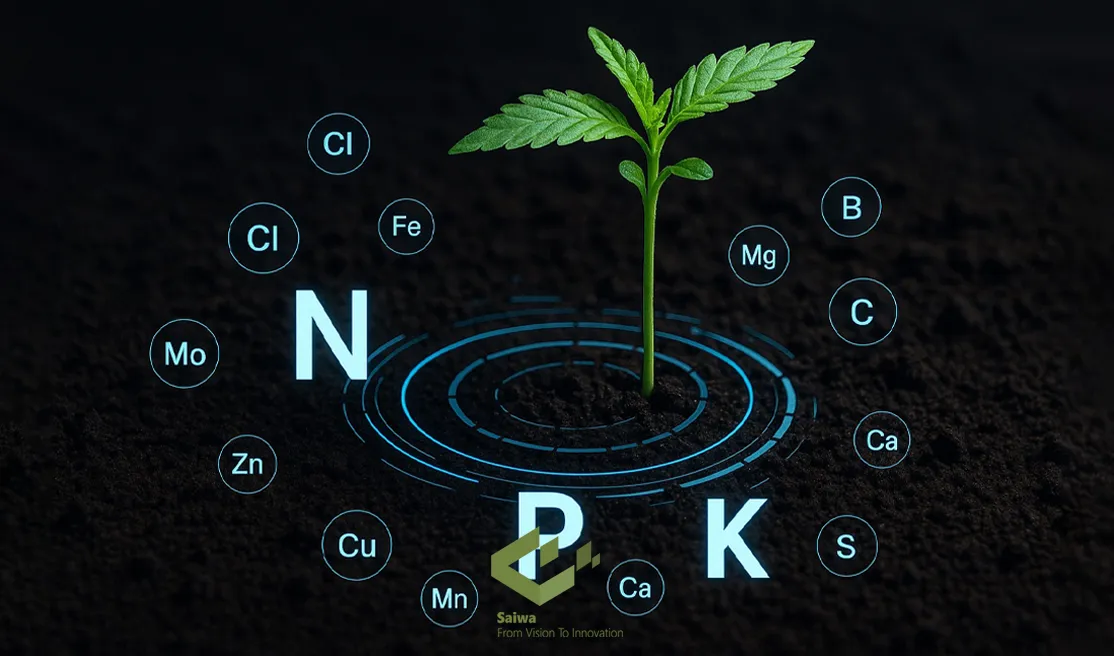
Soil and Leaf Nutrient Monitoring - How Advanced Tools Improve Farm Productivity
Importance of Soil and Leaf Nutrient Monitoring
Effectively managing farm productivity hinges on a delicate balance: providing crops with precisely what they need, exactly when they need it. Over-fertilization degrades soil and pollutes waterways, while under-fertilization compromises yield and quality.
The key to sustainable agriculture is a deep, scientific understanding of nutrient dynamics, a process where advanced tools are becoming indispensable. To optimize this process, several factors come into play:
Key Soil Nutrient Indicators: Analysis focuses on primary macronutrients (N, P, K), secondary nutrients (Ca, Mg, S), and essential micronutrients.
Soil Health Beyond Nutrients: A truly healthy soil requires more than just minerals; factors like pH and organic matter are critical for nutrient availability.
Tissue vs. Soil Tests: Soil tests reveal what nutrients are present in the ground, but leaf analysis confirms what the plant is actually absorbing, identifying hidden deficiencies before visual symptoms appear. Here, AI-powered platforms like Sairone begin to show their value by analyzing drone imagery to detect early signs of stress linked to these deficiencies.
Timing for Leaf Sampling: Nutrient levels fluctuate with growth stages, making precise timing essential for accurate and actionable results.
Soil Nutrient Monitoring Methods
Effective strategies rely on a combination of methods, each with its place in a modern agricultural framework:
Sampling Strategies: Shifting from whole-field sampling to dividing land into smaller management zones based on soil characteristics provides far more accurate data.
Lab vs. Field Analysis: Laboratory analysis offers unmatched precision, while in-field tools deliver speed and immediate feedback for rapid decision-making.

Leaf Nutrient Monitoring Methods
Complementing soil data, leaf analysis gives a direct view of the plant's nutritional status. Key distinctions in this area include:
Sap vs. Leaf Analysis
Sap analysis provides a real-time snapshot of nutrients currently flowing within the plant, whereas a full leaf tissue analysis offers a more comprehensive picture of the plant’s nutritional history.
Best Sampling Protocols Soil and Leaf Nutrient Monitoring
Consistency is crucial. Standardizing the age and position of the leaves being sampled ensures that results are both repeatable and comparable over time.
Best Practices and Considerations
Achieving meaningful results from Soil and Leaf Nutrient Monitoring demands careful planning. To maximize the return on this investment, consider these key points:
Frequency and Depth of Sampling: This should be tailored specifically to the crop’s growth cycle and the known variability of the soil.
Common Pitfalls: A primary mistake is treating a diverse field as a single uniform unit, leading to inaccurate conclusions.
Cost vs. Benefit Analysis: While there are upfront costs, the long-term gains from optimized fertilizer use and increased yields consistently prove the value of this practice.
Advances in Soil and Leaf Nutrient Technologies

The evolution from manual testing to automated analysis is driven by powerful new technologies:
Artificial Intelligence and Machine Learning
AI excels at identifying complex patterns in large datasets from sensors and imagery to predict nutrient levels and soil health.
Drone-Based Remote Sensing
Drones equipped with multispectral cameras capture high-resolution images, creating detailed maps that highlight plant stress and nutrient variability across a field.
IoT and Wireless Sensor Networks (WSN)
In-field sensors provide a continuous stream of real-time data on soil moisture, temperature, and pH.
Robotics and Autonomous Sampling Systems
Automated systems are emerging to perform soil and leaf sampling with greater consistency and efficiency.
Nanotechnology in Nutrient Monitoring
Next-generation nanosensors promise ultra-sensitive and highly specific nutrient detection capabilities.
How Sairone Enhances Nutrient Monitoring with Cutting-Edge Technology
This is where advanced platforms transform data into action. Sairone, developed by Saiwa, leverages AI and drone imagery to move beyond simple data collection. The platform automates the analysis of high-resolution images, providing critical insights for Plant health monitoring.
Its nitrogen content estimation service allows growers to see exactly where crops are thriving and where they are struggling. This enables precision fertilization, reduces waste, and supports better Crop yield estimation. Sairone turns complex visual data into clear, actionable directives for smarter, more efficient farm management.
Conclusion
The future of productive and sustainable agriculture lies in the integration of proven agronomic principles with breakthrough technologies. The meticulous practice of Soil and Leaf Nutrient Monitoring is greatly amplified by AI, drones, and IoT, which provide unprecedented clarity and control. By embracing tools like Sairone that translate complex data into practical solutions, growers can optimize resource use, improve profitability, and steward their land for generations to come. This data-driven approach is no longer a futuristic concept but a present-day reality for competitive farming.
Note: Some visuals on this blog post were generated using AI tools.
